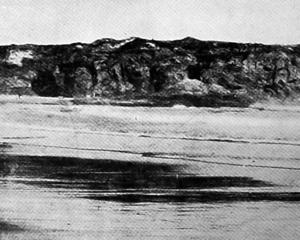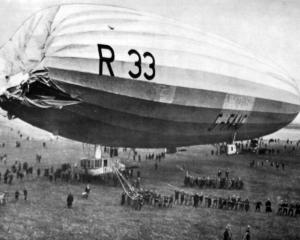Miss Hodgkins is a daughter of the late Mr W. M. Hodgkins, for many years president of the Otago Art Society.
She studied at the Dunedin School of Art under Mr D. H. Hutton, and her skill as a water colour artist was well known when she left Dunedin to enlarge her experience by a pilgrimage to the art centres of Europe.
Miss Hodgkins resided for a number of years in Paris, where she became the first lady teacher on the staff of the Academie Collarossi.
Commencing with a membership of over 60 pupils, she eventually started an academy of her own, which soon became one of the largest private schools in the Latin Quartier.
By dint of her enthusiasm and talent, her work gained speedy recognition, and she won for herself a prominent place among the exponents of modern French art.
Although Miss Hodgkins's work is not so well known in England as on the Continent, she has exhibited at the New English Art Club, the ''International,'' and the Royal Institute, in London, and at the Royal Scottish Academy, at Edinburgh, her work being favourably criticised in each place.
Miss Hodgkins is taking a year's holiday for the purpose of visiting her relations, and also to give exhibitions of her work in Australia and New Zealand.
The products of her brush had many admirers in Sydney, Melbourne, and Adelaide, where exhibitions were given. In Sydney over 11,000 people visited the display of her work within two weeks, and two of her pictures were secured for the art galleries at Sydney and Adelaide. Miss Hodgkins hopes to give an exhibition locally.
She has brought to Dunedin with her 30 specimens of her water colour work, comprising studies of peasant life in Brittany, Normandy, and Holland, and figures, chiefly studies of children.
The work is fresh, having been reserved expressly for the purpose of being shown in Dunedin.
• It is stated (says the Lyttelton Times) that since the recent burglar scares in Christchurch there has grown up a practice of carrying loaded firearms.
Many peaceful citizens have adopted the fashion, and in many private houses revolvers and pistols are said to be installed for use against intruders.
Some ironmongers state that the long series of burglaries resulted in an increased sale of firearms, and it is considered by many that the practice is becoming dangerous.
It has been suggested that the best means of controlling the use of lethal weapons is to prohibit any man owning a firearm unless he is licensed to do so by the police authorities.
It is considered that such a step would be an end to much of the use of firearms by people who are not fitted to have them in their possession.
Children would not be permitted to handle them, and it is anticipated that the list of accidents among holiday sportsmen would not be so long.
The licenses would be chiefly meant to control the revolver and the automatic pistol, as well as the possession by children of rifles which to-day are not governed by the legislation which prohibits children using pea-rifles.
It is considered a remarkable flaw in the statute law that while a child cannot use a pea-rifle of a calibre less than .303, the more deadly Lee-Enfield can be placed in his hands with impunity. - ODT, 16.7.1913.
• COPIES OF PICTURE AVAILABLE FROM ODT FRONT OFFICE, LOWER STUART ST, OR WWW.OTAGOIMAGES.CO.NZ












